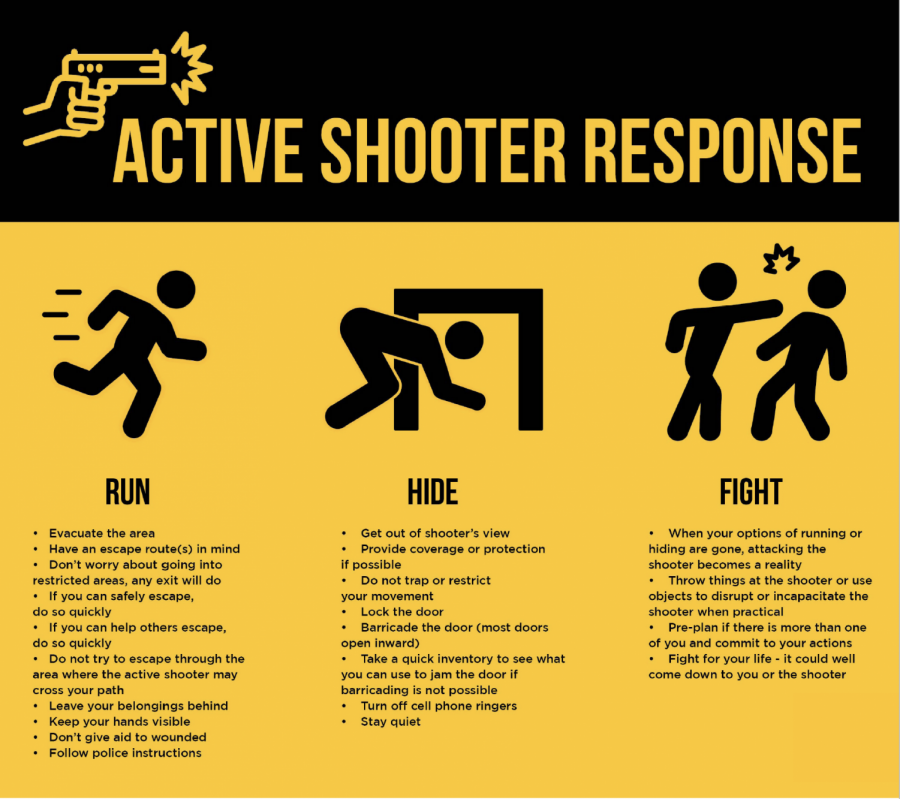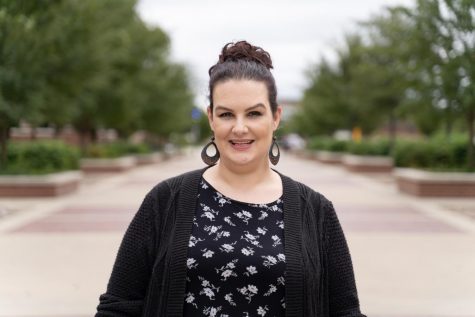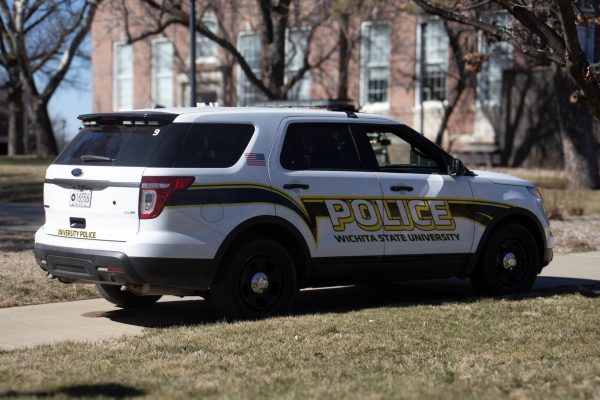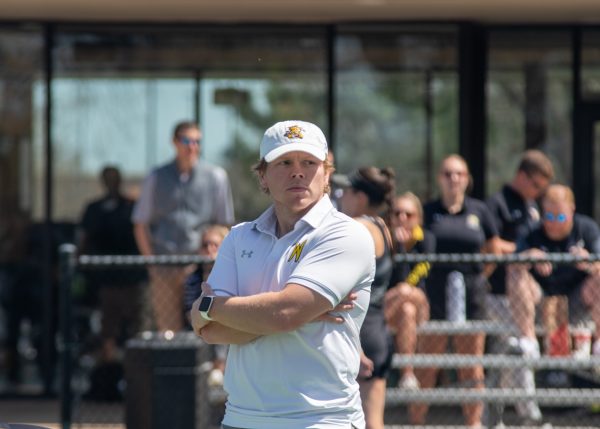Police department talks active shooter preparation

“Breaking news. Active shooter at Wichita State.” The words strike fear in the hearts of students across campus. It’s too horrible to imagine. But preparation requires just that.
Most college students don’t remember a time when mass shootings weren’t repeatedly shown in the news. The current generation of college aged students may not remember Columbine — most remember Virginia Tech, Parkland, and Santa Fe.
If there was an active shooter on campus, WSU has an Emergency Operations Plan that’s “designed to enable faculty, staff and students to successfully cope with campus critical incidents, crises and catastrophes events.”
Chief Rodney Clark and Capt. Cory Herl of the WSU Police Department recently sat down with The Sunflower to discuss active shooter preparations and training at WSU.
One of the things Clark wanted to stress is that any response to an active shooter has to be flexible. Active shooter situations are fluid and dynamic. No two are alike. It’s difficult to plan ahead.
“That presupposes the idea that if there is an active shooter, you should do step one, step three, and step five. All active shooters are going to be different,” Clark said. “Professors or other people might be well-intentioned in saying, ‘We’re gonna do this,’ but it’s an old military axiom that no plan survives first contact and if you don’t have that mindset — if you have the mindset that you think, ‘I’m going to defeat this because I have a plan,’ you may or may not be correct.”
However, you should still think about active shooters on campus before you’re faced with one, Clark said. Three responses to active shooters are taught nationwide, including at WSU. They’re simple, but not easy.
First, run. Get away from the shooter as fast as possible.
Second, hide. Use anything available that will provide some cover from a shooter or shooters.
Third, fight. This is recommended when options one and two are no longer feasible
“Those are pretty much your three options. If you’re inside a building where the shooting is not taking place, my advice is to shelter in place in that building,” Clark said. “That’s part of the hiding. Hiding doesn’t just mean hiding. It also means securing yourself.”
Most walls don’t offer protection. They won’t stop bullets, but walls and doors influence where the shooter goes and where they fire. Clark said most shooters take the path of least resistance. If they can’t get you, they’ll move on. That’s where barricades become useful.
“You can start piling up things in front of the door to make a door secure, so if the shooter tries to open it, they can’t, so there are preventative actions you can take,” Clark said.
If calling 911, what information can you give to make law enforcement’s job easier?
“A description of the shooter, if you’re calm enough,” Herl said. “Where they are. What type of weapon you think it is — is it a shotgun, a rifle, a pistol? Are there multiple actors? Anything you see as an eyewitness is helpful information.
“Since we started teaching this, something that we have pushed is to give yourself options. Think about your options beforehand but don’t just hold solid to one thing. If that one thing fails, don’t just throw up your hands and give up.”
Fighting is your toughest option. Nobody wants to go one-on-one with an armed attacker, but it has been effective in the past.
“I would never suggest that everyone try to fight back because that might not be your forte, but if it’s between your life and someone else’s life, that’s very much a reality that it could come down to that,” Clark said.
After police dispatch takes a call reporting an active shooter, they’ll put out a campus alert with the Rave Guardian personal safety app.
Emergency alerts can come from Wichita Police Department or university administrators. Clark said most go through the police department because they’re crime-related.
“If there was some kind of emergency, there are other people who could activate it, but we have it down in our dispatch center,” Clark said.
The Wichita Police Department has dispatchers on campus in addition to officers. If you call for help during a campus emergency, you’re talking to operators in the basement of the police station.
“It’s manned all the time,” Clark said.
Meanwhile, police officers will investigate the call.
“We’d get in there as quickly as we could with an armed response to try and neutralize the threat and send a message at the same time — to shelter in place,” Clark said.
Ginger Williams, associate dean for academic engagement and public services and assistant professor, recently completed the training for Emergency Building Coordinators (EBC). She’s taking over as the EBC for the Ablah Library this month. Williams says the EBC’s job is to provide a point of contact if there is an emergency. Their focus is on what needs to happen to keep people as safe as possible.
Williams has seen the campus alert system being tested at the library.
“It takes over our computer screens, so whatever I’m doing, it’s not going to look like that anymore,” Williams said. “It’s going to display whatever message they (the police) want me to see. It’s not a pop-up window. It’s the entire screen that changes.”
If you don’t have the Rave Guardian app, Herl said you might be at a disadvantage in a crisis.
“The only way to get an alert if you don’t have the Rave Guardian app is to get it through your email, or if you’re on a university network with your computer, it flashes over your computer and the university television that displays information like at the RSC and Ahlberg Hall.”
If you have the Rave Guardian app on your phone you can expect to be provided with as much detailed information about the shooting and its location as is available.
“If we know the location, we’re going to try to give the location — that it’s in such and such building or in an outdoor location in a certain section of campus,” Clark said. “There could be something that comes out that says, ‘Shelter in place right now. Await further instructions.’ I mean, we’re allowed to type anything that we find relevant at the time. If there’s gunshots ringing out, we’ll try to triangulate — figure out where the person is at.”
There is currently no mandatory active shooter training for faculty and staff at WSU.
“There’s nothing that is mandatory, but active threat training is available,” Herl said. “We’ve been doing that since 2013. HR’s training division helps us, and they track that. I think we’ve done 80 sessions and somewhere around 1,400 or 1,500 people have gone through the training.”
Faculty, staff, and student employees can access voluntary active threat training through the MyWSU website
“I don’t know if you can mandate training for something like this. As a police chief, I can’t.”

Audrey Korte was a reporter and the opinion editor for The Sunflower. She hosted The Sunflower News Podcast.










